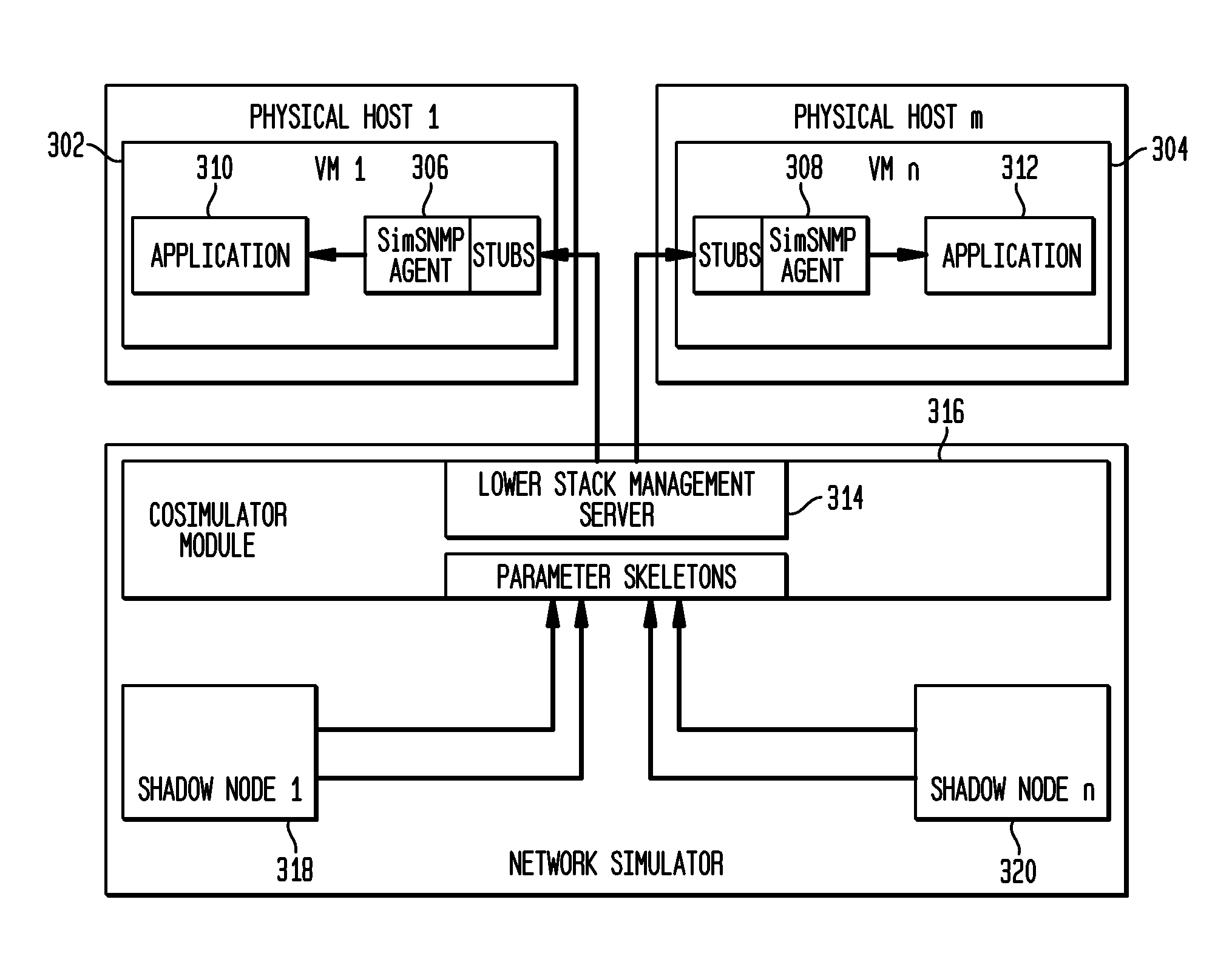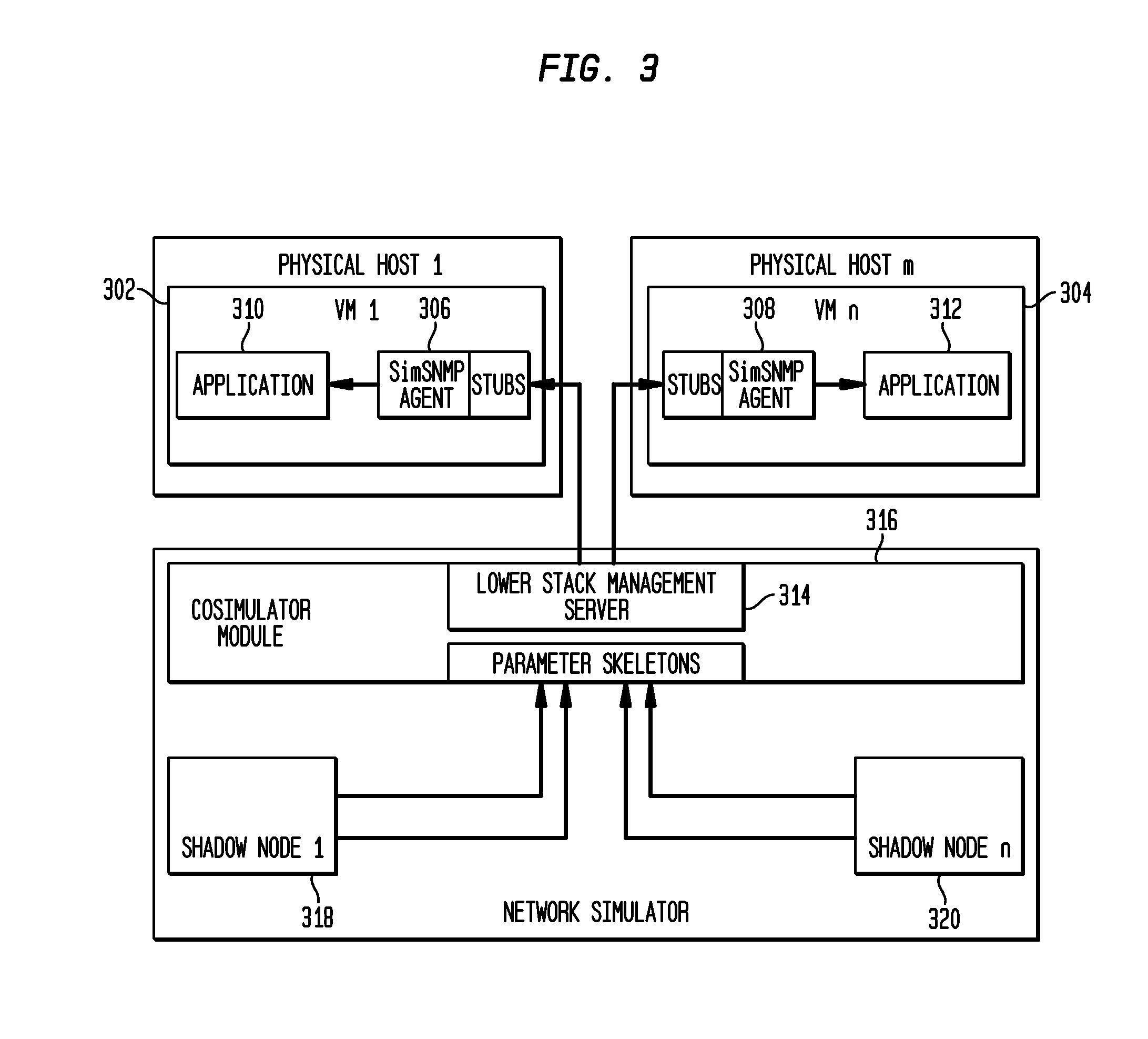Virtual ad hoc network testbeds for network-aware applications
a network and application technology, applied in the field of virtual ad hoc network testbeds for network-aware applications, can solve the problems of inability to conduct infeasibility or impracticality of more than a few hardware devices, and high cost of running large-scale evaluations of manets in physical terrain, so as to shorten the development cycle
- Summary
- Abstract
- Description
- Claims
- Application Information
AI Technical Summary
Benefits of technology
Problems solved by technology
Method used
Image
Examples
Embodiment Construction
[0035]The Virtual Ad hoc Network (VAN) Testbed technology is designed to allow the testing and evaluation of applications over MANETs. A VAN testbed places emphasis on: a) support for executing unmodified applications, i.e., without requiring code change to accommodate the testbed; b) fidelity-providing an accurate representation of the network that is virtualized; and c) scalability of the testbed—enabling a large number of copies of the same application to execute over the testbed.
[0036]In order to provide support for testing unmodified applications, a VAN testbed provides an environment that is as close as possible to the real deployment environment. Accordingly, each application instance executes over its own OS instance, thus having its own set of environment variables, libraries, configurations, and file systems.
[0037]In order to provide fidelity, the VAN testbed features an emulated network consisting of a network simulator that executes in real-time. The network simulator em...
PUM
 Login to View More
Login to View More Abstract
Description
Claims
Application Information
 Login to View More
Login to View More - R&D
- Intellectual Property
- Life Sciences
- Materials
- Tech Scout
- Unparalleled Data Quality
- Higher Quality Content
- 60% Fewer Hallucinations
Browse by: Latest US Patents, China's latest patents, Technical Efficacy Thesaurus, Application Domain, Technology Topic, Popular Technical Reports.
© 2025 PatSnap. All rights reserved.Legal|Privacy policy|Modern Slavery Act Transparency Statement|Sitemap|About US| Contact US: help@patsnap.com



